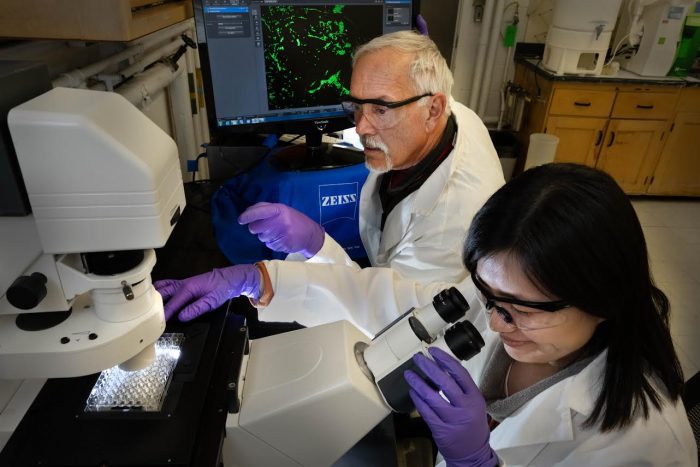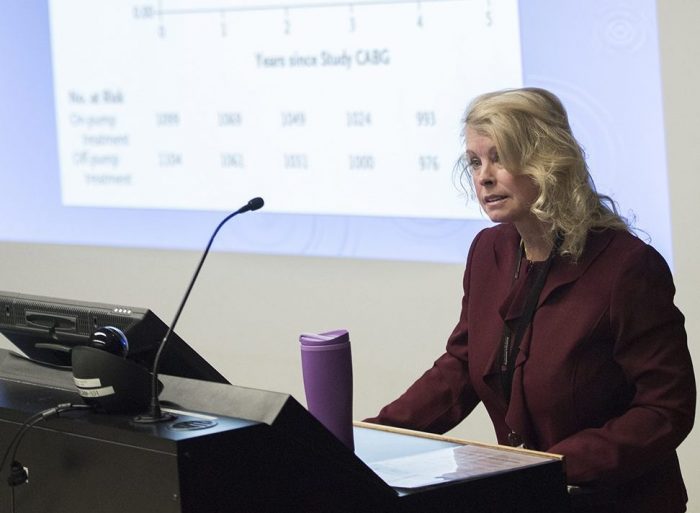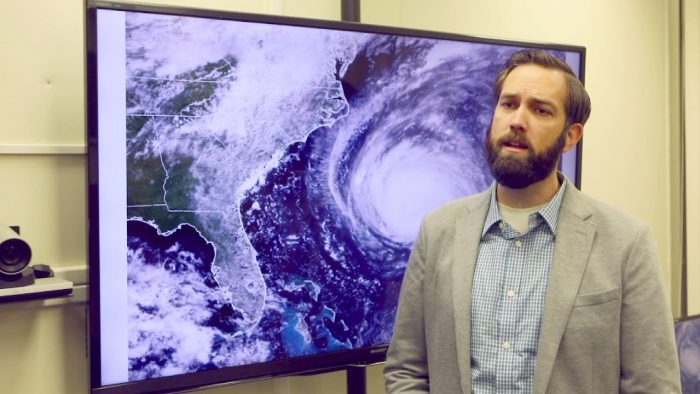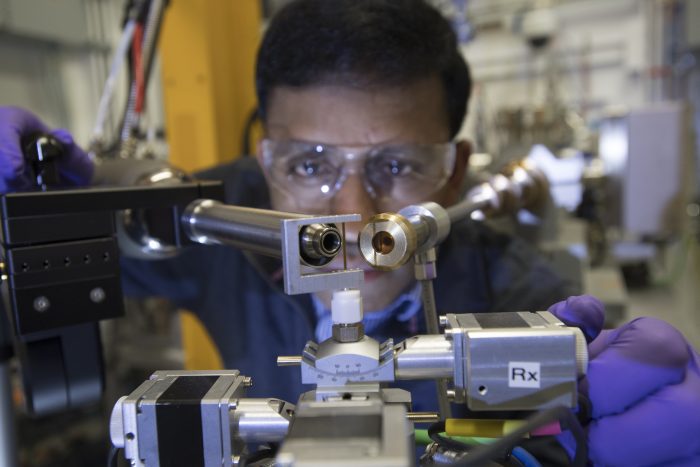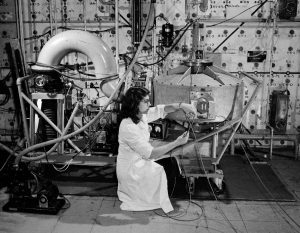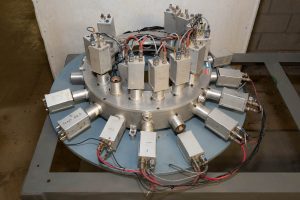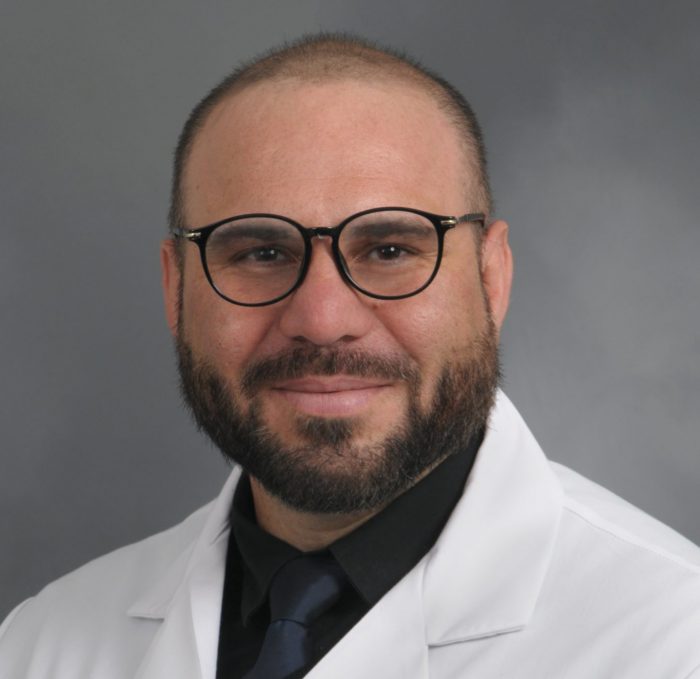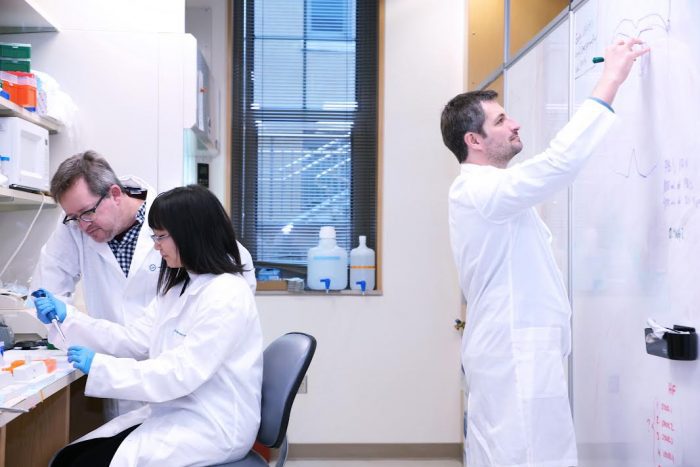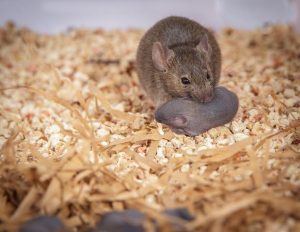By Daniel Dunaief
What if scientists could train the immune system to recognize something specific on the outside of unwanted cells?
That’s what new Cold Spring Harbor Laboratory fellow Corina Amor is doing, as she found an antigen on the surface of senescent cells. She hopes to train a patient’s T-cells to search for these cells, much like providing a police dog with the scent of a missing person or escaped convict.
Amor, who joined Cold Spring Harbor Laboratory in January after earning her medical degree in at Universidad Complutense de Madrid in Spain and her PhD in the lab of CSHL Adjunct Professor Scott Lowe, recently found a surface molecule called uPAR that is upregulated on senescent, or aging, cells.
If senescent cells excessively accumulate, it can lead to tissue decline and disease like lung and liver fibrosis, Lowe, who is the Cancer Biology Chair at Memorial Sloan Kettering Cancer Center, explained in an email. Senescent cells also contribute to tissue decline as people age.
Studies suggest eliminating these senescent cells could provide therapeutic benefit, she added.
Using artificial T-cells, called CAR-T, for Chimeric Antigen Receptor, Amor looks to use specific antigens to find these senescent cells and eliminate them.
“It was sort of a crazy idea, but it worked and, while much more preclinical and clinical work needs to be done, the concept could lead to better treatments for lung and liver fibrosis, and other diseases that increase as we age,” Lowe wrote.
The combination of an inflamed environment and an ineffective immune system can create conditions that favor the growth and development of cancer.
Amor, who currently has one technician and is planning to add a graduate student this summer at her lab at CSHL, is building on her PhD research.
“My doctoral work was the development of the first CAR-T cells that are able to target senescent cells,” she said. “We were the first in the world to do this.”
Amor, who was recently named to the 2022 Forbes 30 under 30 Europe list, describes this approach as a new frontier for treating senescent cells and one in which researchers would need to clear numerous hurdles before developing clinical therapies.
She is searching for other antigens on the surface of cancerous and fibrous cells that would increase the specificity of these synthetic immune cells.
Combining antigens could be the key to avoiding off target effects that might cause the immune system to attack healthy cells.
Amor plans to tap into CSHL’s affiliation with Northwell Health to analyze clinical samples that might provide a better understanding of various potential markers.
Fellowship route
Cold Spring Harbor Laboratory is one of several programs in the country that provides talented researchers with the opportunity to go directly from finishing their PhD to leading their own lab.
Amor is following in the footsteps of her MSKCC mentor Lowe, who also had been an independent fellow at CSHL.
Lowe saw some similarities in their career paths, as they both made “unexpected discoveries during our Ph.D. research that were not only important, but clearly set a path for future research,” he explained in an email.
Lowe describes Amor as an “intense and driven scientist” who has an “extraordinary bandwidth to get things done, and a mental organization that allows her to execute science efficiently.” He believes her work is game changing at many levels and opens up numerous new directions for scientific study.
Lowe is “extraordinarily proud of [Amor] for becoming a CSHL fellow – and I hope she both contributes and benefits from the lab as I did,” he wrote in an email.
Amor said CSHL provided an ideal balance between finding collaborators who worked in similar areas, without competing for the same resources and conducting similar research.
“The last thing you want is to go somewhere and be completely isolated,” she said. “You also don’t want to be at a place where there’s three other people doing the same thing and you’re not adding anything.”
She feels like she had a “nice synergy” with CSHL, which is trying to expand its immunology research.
As the first person to bring cellular therapy to CSHL, she has already started collaborating with several groups.
Amor recognizes the challenges ahead in training scientists who often have their own ideas about the questions they’d like to ask.
“The science is the easy part” and it comes naturally, but there is a “learning curve in how to manage people,” she said.
She appreciates the opportunity to talk with senior researchers at Cold Spring Harbor Laboratory and plans to attend courses and seminars for principal investigators who are starting out.
When she was in graduate school, Amor said she rotated through different labs. When everything didn’t work as she might have hoped during those rotations, she said she had the opportunity to learn from those experiences.
“When training people in the lab, I try to be really specific about what I want to do” while also ensuring that the researchers understand and appreciate the bigger picture and context for individual experiments, she said.
Originally from Madrid, Amor felt comfortable during her five years in Manhattan and is enjoying the open space and fresh air of Long Island in her role at CSHL. She also appreciates the chance to kayak in the waters around Long Island.
When she was around seven years old, Amor said her mother Esperanza Vegas was diagnosed with breast cancer. By participating in a clinical trial for a new drug, her mother fought off the disease.
“That made me realize how important science and research is,” Amor said.
During her educational training, Amor went directly from high school into a six-year program in which she earned a bachelor’s degree and a medical degree.
By the time she finished her PhD, she was hooked on research.
She appreciates the advice she received from Lowe, who encouraged her to conduct experiments despite the risks.
“Don’t get paralyzed at the beginning by fear,” she said. “Do the experiment and see what happens.”


